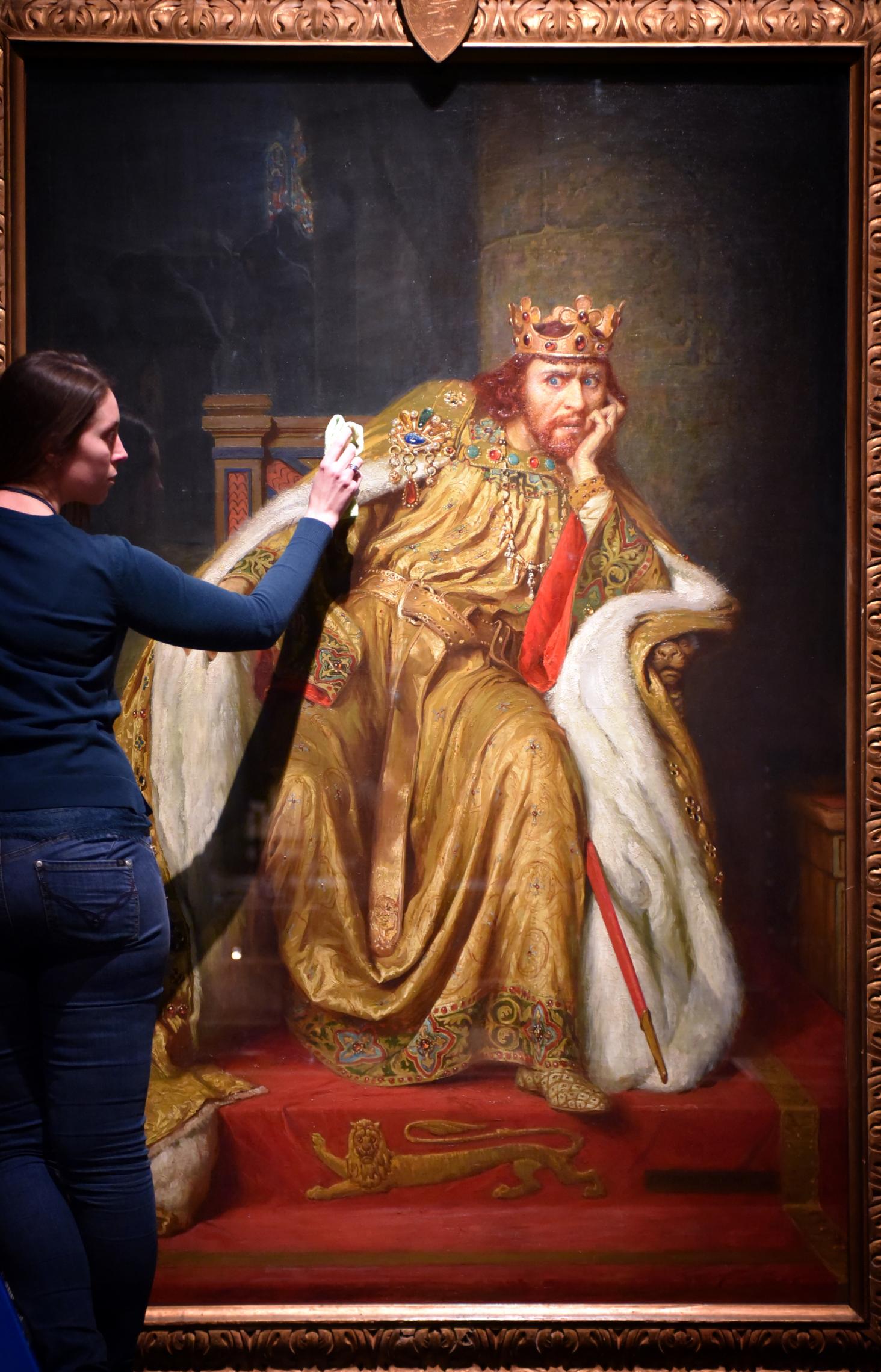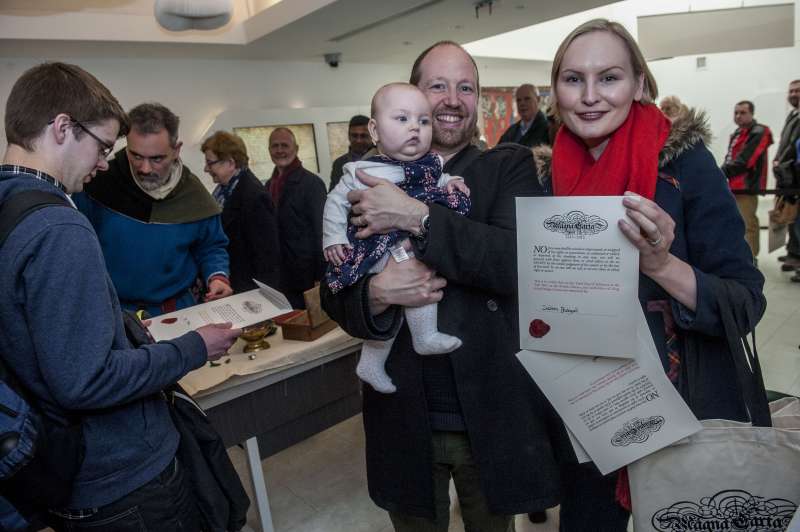Britain is gearing up to celebrate the 800th anniversary of Magna Carta – the Great Charter, the corner stone of democracy across the world…reports Asian Lite news

The Magna Carta was the Charter of Liberties that King John granted at Runnymede on 15 June 1215 as a practical solution to the political crisis he faced. Written in Latin on a single parchment and comprising a total of 63 clauses, the Magna Carta established for the first time, that the King was subject to the law rather than above it. By its terms, the King was committed to upholding the Rule of Law and ensuring that justice was done equally to every free man “by the lawful judgement of his equals or by the law of the land”.
Sir Robert Worcester, Chairman, Magna Carta 800th Committee, said, “The relevance of the Magna Carta in the 21st century is that it is the foundation of liberty. I am delighted that Royal Mail has marked this landmark document, and other key bills and declarations it inspired, with these striking stamps. It is fitting that they will be seen by people all around the world.”
Andrew Hammond, Director, Stamps and Collectibles, Royal Mail said, “The legacy of Magna Carta has been far-reaching. The Charter’s unique status as a fundamental text, guaranteeing freedom under the law, has been the inspiration for many key charters, bills and declarations which have become milestones in the development of the rule of law throughout history and across the world.”
Royal Mail has issued Magna Carta stamps to commemorate 800th Anniversary. A new stamp set also pays tribute to other bills declarations inspired by Magna Carta.
As well as reproducing key texts from Magna Carta, the other stamps mark the 750th anniversary of Simon de Montfort’s Parliament, the Bill of Rights, the American Bill of Rights, the Universal Declaration of Human Rights and the Charter of the Commonwealth
Royal Mail worked closely with the Magna Carta 800th Committee to produce six stamps to celebrate the Magna Carta itself and other landmark bills and declarations from which the rule of law developed throughout history and across the world.
There are 12 towns linked to the story of the Magna Carta unfolding and Royal Mail vans these in towns will feature a stamp from the set. The towns are: Runnymede; Faversham; Durham; Canterbury; Sandwich; Bury St Edmunds; St Albans; Salisbury; Oxford; City of London; Lincoln and Hereford.
Four new church bells specially commissioned to celebrate Magna Carta 800th will be cast for St. Mary’s Church, Thorpe in the Borough of Runnymede.
Believed to be the only bells to be cast in the UK for the MC800th anniversary they will be hung afterwards in St. Mary’s Church, Thorpe to join the existing four bells and provide a unique and long-lasting legacy for future generations.
The Whitechapel Bell Foundry will undertake the casting of the four new bells, as they did in 1958 when the original three bells dating from 1693, 1725 and 1758 were recast to make four.
The bell inscriptions will include the names of King John, Stephen Langton, Archbishop of Canterbury, Adam, Abbott of Chertsey Abbey and the MC800th logo. St. Mary’s church is the oldest church in the borough and was in existence at the time when Magna Carta was sealed on Runnymede Meadows in 1215 AD. The St. Mary’s Bells Project is funded by generous donations from parishioners and a grant from the Magna Carta Trust.
The project will allow local schools and colleges to engage with moral, social and cultural aspects of learning, through exploring the church location, the history of bell-ringing and contemplation of the past 800 years’ growth of democracy throughout the world.
Runnymede Magna Carta Pageant will take place in Runnymede to mark the 800th anniversary of the Magna Carta and budding visitors can now book tickets to secure their place.
The event, which will include a performance reflecting the events of 1215 when the charter was sealed, will be held at Runnymede Pleasure Ground on Sunday June 14 from 10am-6pm.
Paul Turrell, chief executive of Runnymede Borough Council, said: “The pageant promises to be a great day out for all ages.“It will be the culmination of the public commemorations in Runnymede, ahead of the Royal visit the following day.“While the re-enactment of events 800 years ago will take place in the afternoon, there will be a range of entertainment activities throughout the day in the activities tent for families to get involved in.
Children can get involved in activities such as face painting and key-ring making, and families are permitted to bring their dog along for the day.
Picnics are welcomed at the event and food and drink, including a bar tent, will also be available.
Right or justice
Magna Carta has made a long journey through time, spanning the globe by virtue of its implications and legacy. It has transcended barriers of language and the divisions of cultures and ideologies. 800 years on, the simple ideas of Freedom and Justice have become part of the genetic structure of humankind.
Whenever denials of Magna Carta’s first principles have taken place, it has led to dehumanisation, genocide and an uncomfortable retrograde step against evolution itself. This has happened many times, but the indestructibility of the idea has re-emerged, usually more potent than before.
Ideas of freedom and democracy, the rule of law to which all are subject and which are such a feature of Magna Carta, spread via France to the rebellious colonies of the New World. Thomas Jefferson not only paid tribute to the Levellers of the Putney Debates as an inspiration for the revolution, but used the breaches of the Magna Carta by yet another king, as retrospective justification for creating a brand new country in 1776.
Amendments to the Constitution of the United States numbers 5 and 14, concerning the primacy of the law above the head of state, trace their lineage to the death of the Divine Right of Kings and a chopping block in Whitehall.
Later in 1948, the world, when confronted with the smouldering evidence of what happens when freedom, democracy and the rule of law are swept aside by force, adopted the Universal Declaration of Human Rights and it is still for many, a work in progress.
The legacy of empire left behind the principles of Magna Carta enshrined within the constitution of the world’s largest democracy in 1947. With a population of over 1.2 billion people, India is a powerful guarantor of Magna Carta principles.

The European Convention of Human Rights echoes Magna Carta in Article 6 and now, many millions of people in a post-cold war Europe have inherited the legacy of the events of 19 June, 1215.
800 years on, Magna Carta’s best days lie ahead. As an idea of freedom, democracy and the rule of law, it is lapping against the shores of despotism. The principles set out in Magna Carta have driven the Arab Spring and the continuing protests against despotism around the world. These principles, with the power of social networking and the internet to spread them, will no doubt continue to have huge influence wherever freedom is under attack.
The Internet and instant worldwide personal communication are emblematic of the fluttering pennants of the twenty-five barons who waited impatiently for their despotic king to round the last bend in the river on a summer’s day in 1215.
800 years of liberty
Magna Carta was not the first time that a monarch had agreed in writing to safeguard the rights, privileges and liberties of the clergy and the nobles – to place limits on the power of the crown.
Henry I set a precedent on his accession to the throne in 1100, thirty-four years after the Norman Conquest. He issued a royal proclamation – the Coronation Charter, designed to atone for the past abuses of his predecessor William Rufus.
Yet even though the Coronation Charter is acknowledged as the precursor to Magna Carta, it was conveniently forgotten and / or ignored by four Kings, and almost one Queen, over the course of the next century.
It was only after Archbishop of Canterbury, Stephen Langton, also in long term dispute with King John, dusted off the 113 year old proclamation of Henry I and showed it to the Barons, that the idea of a new and improved charter – a Great Charter took hold.
Magna Carta, despite the pennant flying theatricality of the showdown at Runnymede in June, 1215, suffered a similar, yet more rapid demise than the Coronation Charter.
Once these ideas of freedom were liberated by the events of 19 June, 1215, and it had been shown that not even the king was above the Common Law of the land, then Magna Carta became an idea which could never be uninvented, or unimagined.
Besides, up to thirteen copies of Magna Carta were quickly made, (complete with spelling mistakes) and sent throughout the kingdom, often to the great cathedrals of England. Magna Carta had therefore gone viral. There were just too many important witnesses to the events of June 19th, many of whom were the bishops themselves, for Magna Carta to be ever denied or forgotten.
Over the course of the next 800 years, the idea of Magna Carta gathered momentum and assumed a greater authority in respect of the central key clauses concerning liberty and justice. These central clauses, usually referred to as 38 and 39, have not only stood the test of time, but have a potency of their own which has seen off hundreds of attempts at annulment, repeal, modification and suspension by successive monarchs and governments.
The Magna Carta has been the most valuable export of Great Britain to the rest of the world.